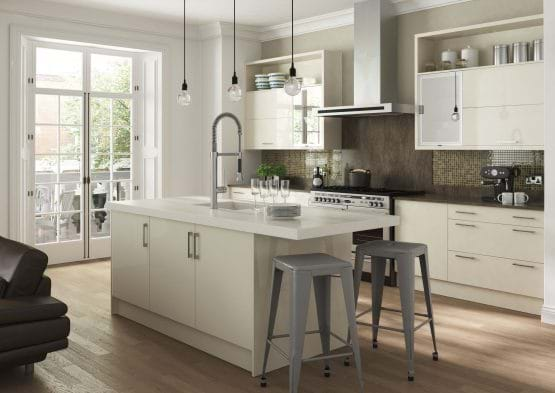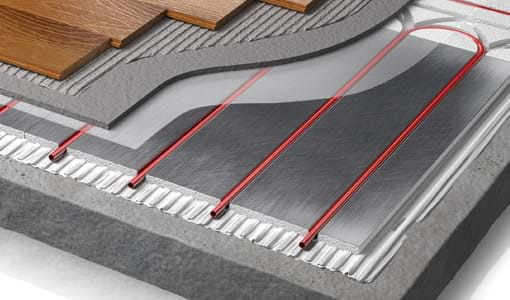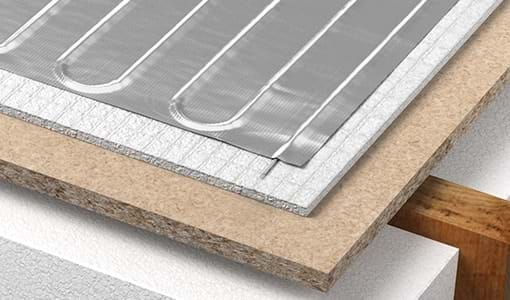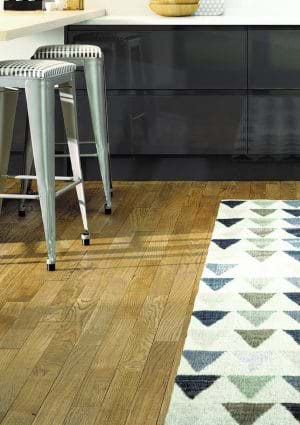
For an energy-efficient way to warm your home, underfloor heating gives a more pleasant heat than radiators by emitting radiant heat from under the floor. They are an affordable space-saving option as they can save a home up to 15% energy in comparison to conventional electric heating.
With the kitchen usually being the most used room in the house, it is important to consider how we want to use the space effectively for entertaining, cooking and relaxing. Underfloor heating provides an expert home-heating solution that is perfect for use in kitchens.

Underfloor heating is an energy-efficient way to warm up your household. They provide optimal thermal which gives a more pleasant heat than radiators or traditional fuel fires. It’s an effective way to disperse heat with no cold spots as most of the heat is concentrated in the lower part of the room. It’s an affordable option which can be easily installed and saves energy when compared to conventional heating.

With underfloor heating installed there is no need for radiators, which is an advantage as they can often take up valuable wall space for kitchen units and additional storage. During a kitchen renovation, electric underfloor heating can be the ideal solution to your project as it will not manipulate the floor height but will provide efficient warm floors for the family to enjoy for years to come.

Water based systems are made up of pipes that are typically connected to your boiler, and they use warm water from the central heating system. By nature, wet systems are more costly and disruptive to install, however they reduce water-heating costs as it uses water at a lower temperature (about 40°C to 65°C to give a floor temperature of between 23°C and 32°C).

Dry underfloor heating is available in the form of basic heating cables that are usually woven into mesh mats or heating films. These mats or rolls are connected together and are then linked up to the thermostat and mains power supply. Your kitchen flooring is then laid directly on top. Electric systems are cheaper to install and cause less disruption as they allow the room to reach the required temperature faster than the wet system.

Tile and stone floors are ideal for use with an underfloor heating system as they heat up fast and retain heat well, making the system efficient to run. Tile and stone have high thermal conductivity, meaning that the heat from an underfloor heating pipe or wire transfers to the floor surface quickly. Tile and stone also retain heat well making the system efficient. They can be heated to up to 29°C or more.

Laminate flooring is increasingly popular in all types of households. The practicality of this material, cost-value and aesthetics makes it a popular floor surface. Laminate is well-compatible with underfloor heating. The key is to ensure thermal conductivity, which is best when using more dense laminate, as the shorter the heat-up time; the more responsive the system will be.

Engineered timber is the best type of wood to use with an underfloor heating system as it adapts well with changes in floor temperature. Other wood flooring can also be used, but with softer wood, attention must be paid to the thickness so that the floorboards do not act as an insulator blocking the heat. As a general rule for wood flooring, the floor surface temperature must not exceed 27°C.

Vinyl can be safely used with underfloor heating as it heats up and cools down quickly. Vinyl floors are subject to a top floor temperature restriction, usually 27°C, which limits the heat output as they are not recommended in high heat loss areas.There are four types of vinyl flooring: Amtico, Karndean, Click Vinyl and Tarkett floor that differ in their specification requirements.
